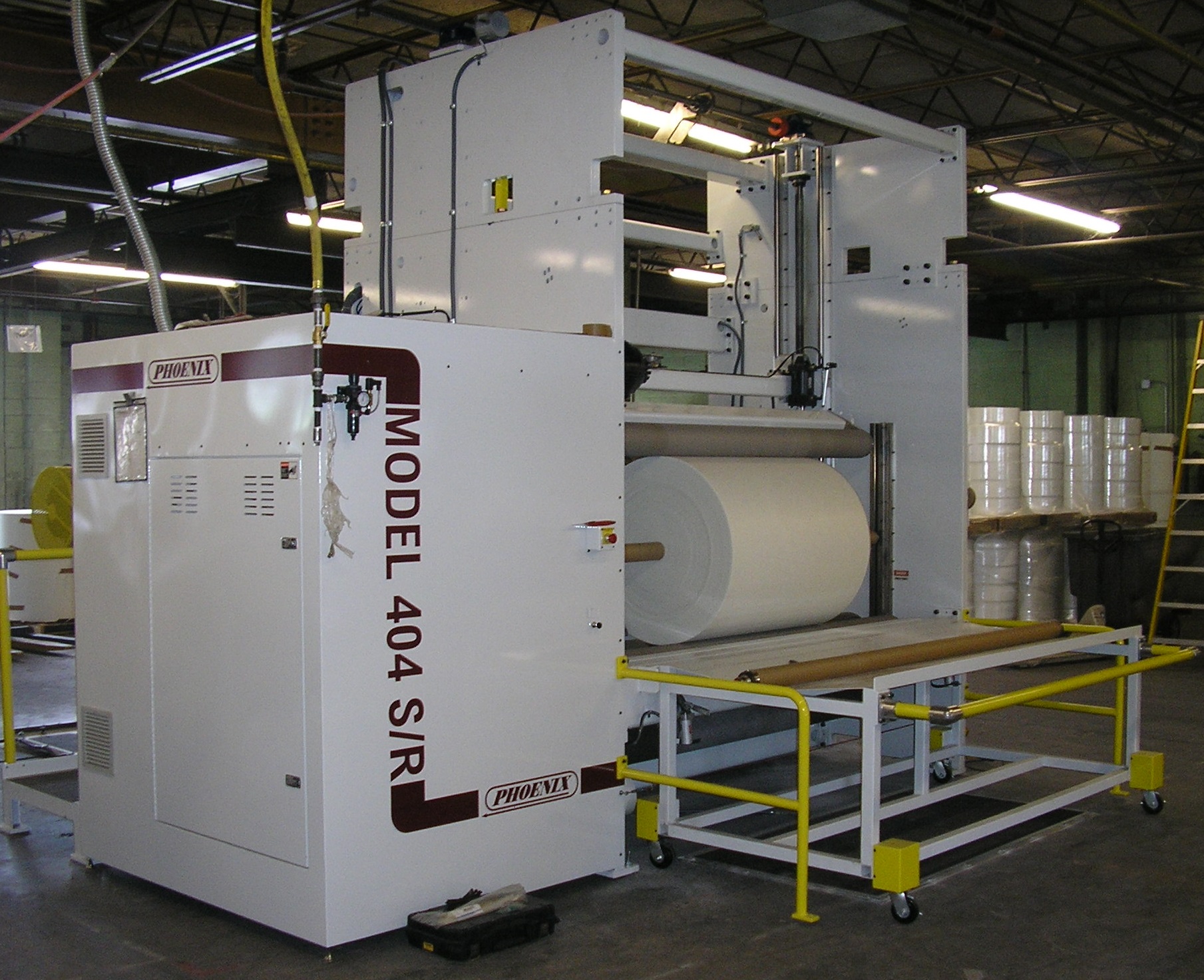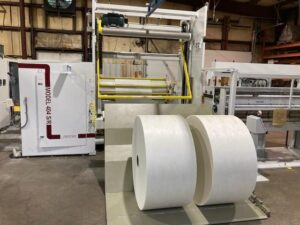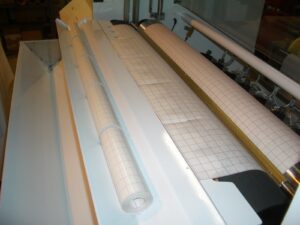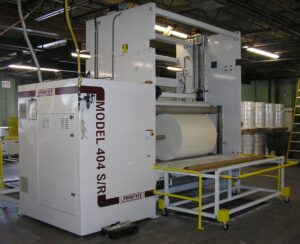
The Evolution of Surface Winders in Converting Applications
Michael Coulson | May 14, 2025
Surface winders have undergone substantial technological transformation since their inception as basic paper converting systems. Today, they represent a cornerstone of modern converting operations, engineered to process a broad spectrum of substrates with high precision, efficiency, and adaptability. Their capacity for high-speed operation, integrated with advanced tension control mechanisms, has rendered them indispensable across industries demanding consistent output quality. With the integration of automation and intelligent control systems, surface winders continue to redefine productivity benchmarks in industrial material processing.
Operational Principles of Surface Winding Systems
Surface winders function through direct contact between the winding drum and the web material, facilitating uniform tension application and precise roll formation. This surface-driven architecture ensures consistent winding quality, essential for preserving material integrity throughout the production cycle. High-throughput manufacturing environments benefit from rapid roll change capabilities, which are enabled through streamlined roll transfer systems that minimize downtime and support continuous operation under stringent production schedules.
A key design distinction lies in the availability of both shafted and shaftless configurations. Shafted winders utilize mechanical core shafts for roll support, offering enhanced stability for large or heavy rolls. Shaftless systems, on the other hand, eliminate the need for a core shaft, improving operator flexibility and accelerating roll changeover-especially advantageous in applications requiring frequent material or core size changes.
Technical Features Enhancing Surface Winder Performance
The efficiency of surface winders is largely driven by their specialized features, which ensure seamless operation and high-quality output. One of the most critical components of these machines is their high-tension control system, which enables precise winding even for heavy and hard-wound rolls. Maintaining accurate tension throughout the winding process prevents material defects such as wrinkles, air entrapment, and uneven roll formation.
Rapid job changeover functionality is another essential attribute. Simplified mechanical setups and automated roll positioning allow for swift transitions between product runs, ensuring minimal interruption to production workflows. In high-speed converting lines, this capability is integral to maintaining throughput efficiency and equipment utilization.
Furthermore, modern surface winders incorporate modular slitting systems that support a variety of cutting techniques. Score slitting (crush cutting) is suited for compressible substrates, while shear slitting delivers precise, clean cuts for denser materials. These systems offer flexibility in processing diverse materials and facilitate tight tolerance control for roll dimensions and edge quality. Additional design elements such as front-unloading mechanisms enhance operator ergonomics and material handling efficiency, reducing manual labor requirements and streamlining downstream processes.
Material Versatility: Expanding Industry Applications
A hallmark of contemporary surface winders is their ability to accommodate an extensive range of materials and web specifications. These machines are integral to sectors including packaging, textiles, non-wovens, and specialty paper production. From lightweight films and laminates to high-strength substrates like fiberglass mat or coated board stock, surface winders provide the structural robustness and control precision necessary for optimal roll formation.
In small-diameter applications-such as painter's tape, counter rolls, and flexible laminates-surface winders must ensure gentle yet accurate winding to preserve product characteristics. Conversely, large-diameter applications, such as in paper mills or composite production, demand robust frame construction and enhanced torque management to maintain roll integrity under high-tension conditions.
Typical machine capabilities include web widths from 18 to 120 inches and finished roll diameters ranging from 10 to 90 inches, with customizable options to support application-specific parameters. This scalability underscores their utility in both low-volume specialty converting and high-volume industrial manufacturing.
Advances in Slitting Technologies: Enhancing Precision and Quality
Slitting is an essential process in converting operations, and surface winders have continuously integrated advanced slitting technologies to improve material processing. One of the most commonly used methods is score slitting, which employs a crush-cutting technique to create clean, controlled cuts. This method is particularly effective for softer materials that require minimal dust generation during processing.
Shear slitting, on the other hand, uses a scissor-like cutting action to produce highly precise cuts, making it the preferred choice for tougher materials such as paper and board stock. By incorporating these slitting techniques, surface winders not only improve the quality and consistency of the final product but also help reduce material waste. Optimized slitting methods ensure that manufacturers can achieve high accuracy in their cutting processes while maintaining efficient production workflows.
Industry Impact and Future Developments
As global manufacturing demands continue to rise, surface winders are evolving with cutting-edge automation and control features to enhance their performance. One of the most impactful advancements in recent years has been the integration of closed-loop tension control systems. These systems continuously monitor and adjust tension parameters in real-time, ensuring optimal roll quality and reducing variations in material processing.
Modern surface winders also incorporate user-friendly touchscreen interfaces, providing operators with real-time monitoring capabilities and intuitive machine control. These interfaces enhance the efficiency of production operations by allowing quick adjustments and seamless troubleshooting.
Automated roll handling is another innovation that has significantly improved production efficiency. By reducing the need for manual labor, these systems streamline material movement and minimize the risk of handling errors. The integration of robotic assistance in roll unloading and packaging further enhances the speed and accuracy of the converting process.
Looking ahead, the role of artificial intelligence (AI) in surface winders is expected to grow. AI-driven process optimization and predictive maintenance capabilities will enable machines to analyze performance trends and detect potential issues before they result in downtime. By leveraging data-driven insights, manufacturers can achieve greater productivity, reduce operational costs, and maintain consistent product quality.
Conclusion: The Ongoing Transformation of Surface Winders
The evolution of surface winders from basic paper-converting machines to highly sophisticated,. high-speed equipment has revolutionized the converting industry. Their ability to handle a wide range of materials, combined with features that enhance efficiency and precision, makes them an indispensable tool for modern manufacturing. As technology continues to advance, surface winders will play an even more crucial role in optimizing production processes, reducing waste, and maintaining high-quality standards.
With ongoing innovations in automation, slitting technology, and Al-driven process improvements, the future of surface winders looks promising. Companies that invest in the latest advancements in these machines will benefit from increased efficiency, reduced downtime, and enhanced production capabilities. Whether in packaging, textiles, or non-woven materials, surface winders will continue to be at the forefront of precision converting solutions, driving progress across multiple industries.
Recent Post
-
Engineering High-Efficiency Converting with Surface Winders
Michael Coulson | May 27, 2025
-
Choosing the Right Surface Winder for Your Business
Michael Coulson | May 20, 2025
-
The Evolution of Surface Winders in Converting Applications
Michael Coulson | May 14, 2025
-
Solving the Machinery Maintenance Crisis—With Phoenix Machine
Michael Coulson | May 1, 2025
-
How to Choose the Right Slitter Rewinder for Your Business
Michael Coulson | March 19, 2025


